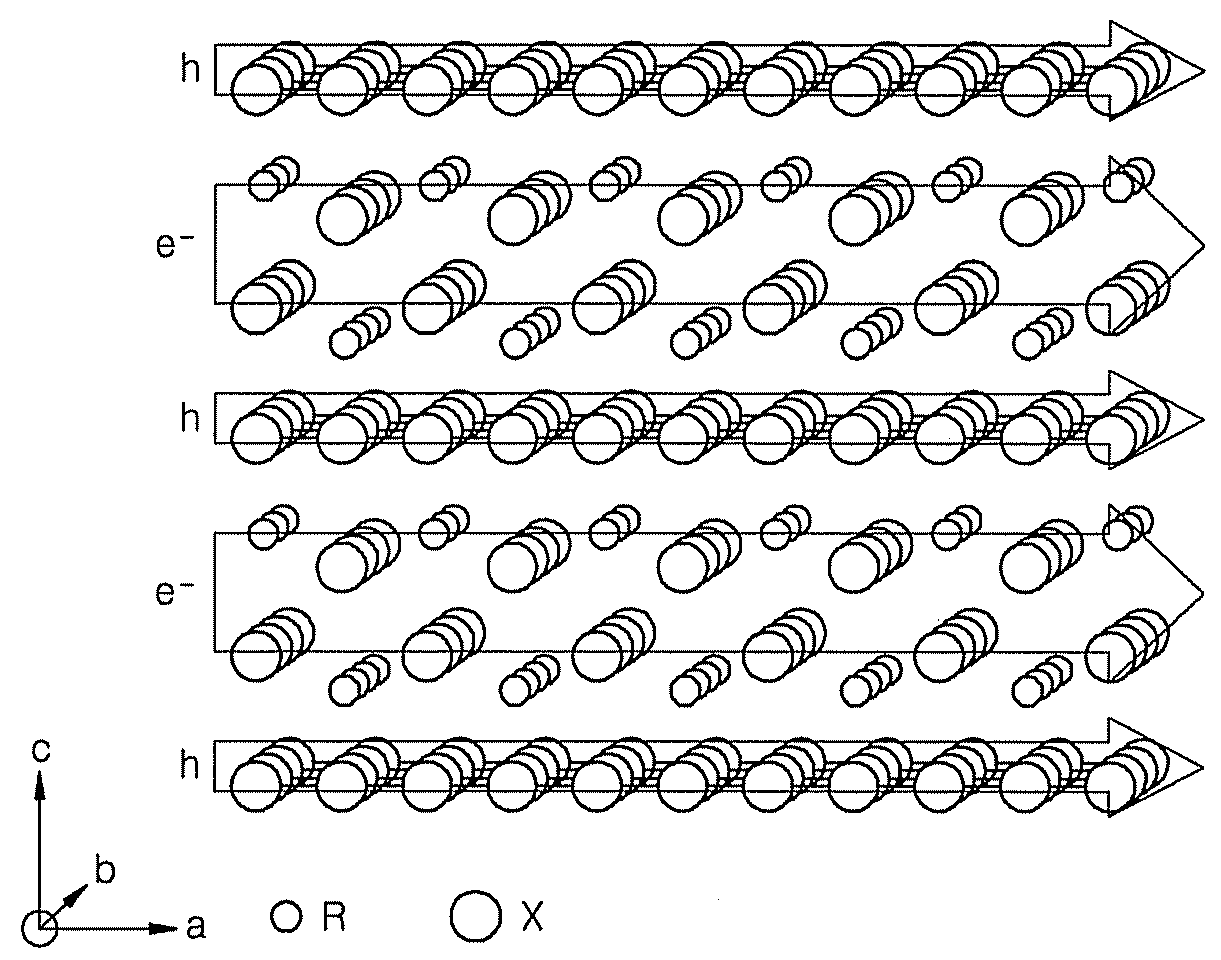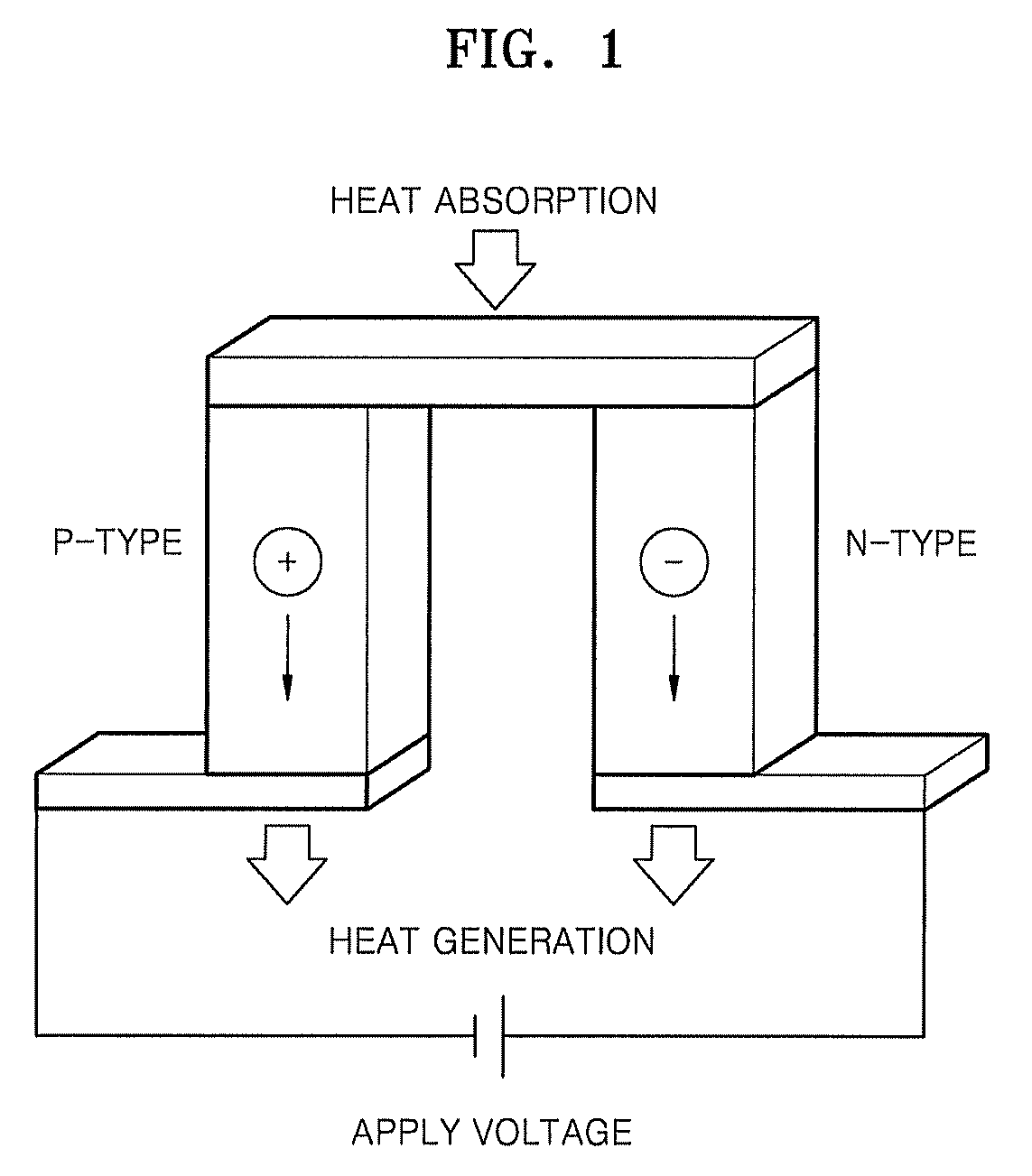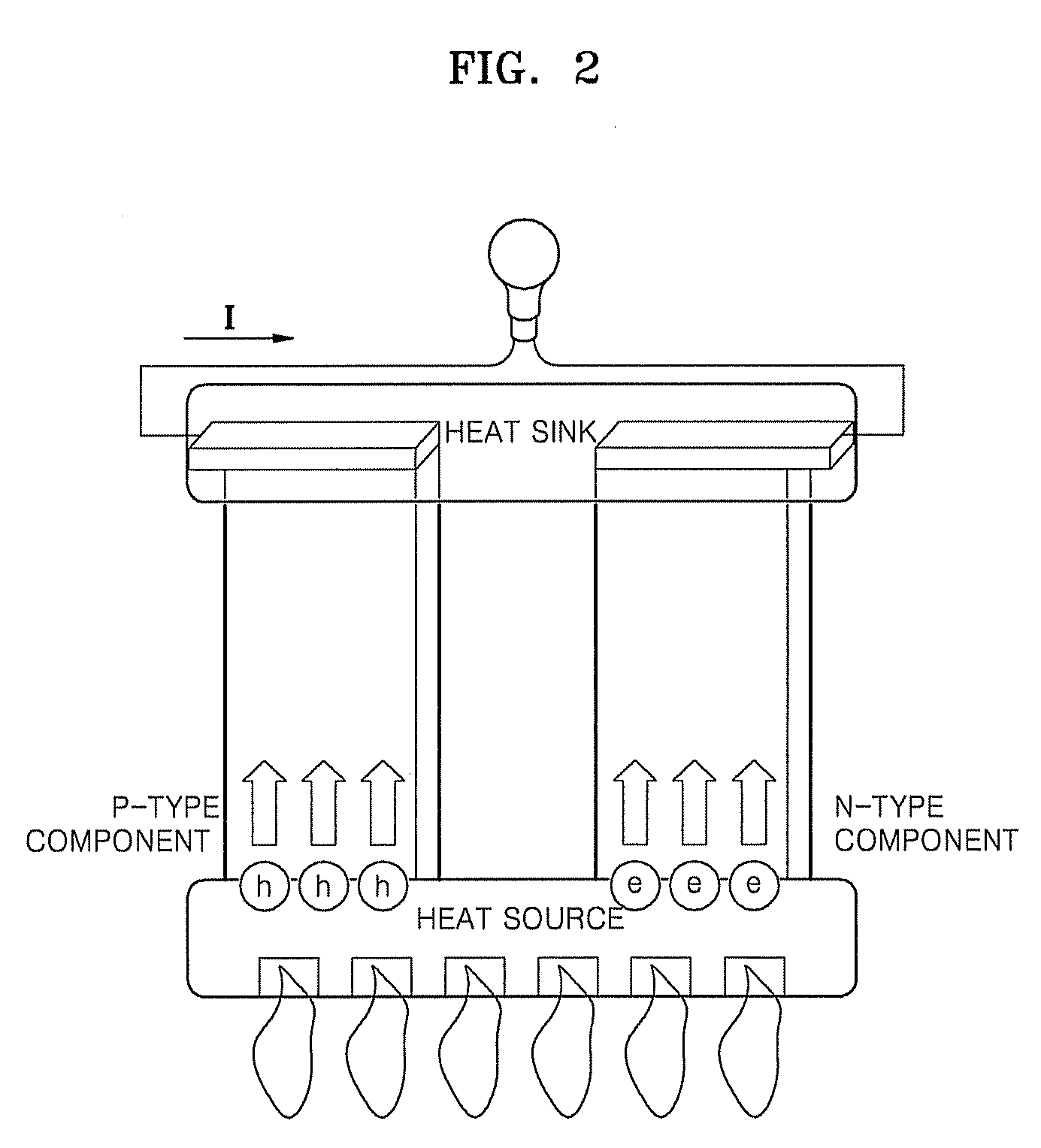Dichalcogenide thermoelectric material
a thermoelectric material and dichalcogenide technology, applied in the direction of basic electric elements, metal selenides/tellurides, selenium/tellurium compounds with other elements, etc., can solve the problems of low thermal conductivity of the c-axis direction, many thermoelectric materials perform well, and achieve low thermal conductivity , large power factor
- Summary
- Abstract
- Description
- Claims
- Application Information
AI Technical Summary
Benefits of technology
Problems solved by technology
Method used
Image
Examples
example 1
[0089]A polycrystalline thermoelectric material was synthesized by the ampoule method using an ampoule. First, Ce, Te, and Sn as material elements were quantified in a predetermined ratio and added to an ampoule made of a quartz tube. Then, the ampoule with the material element was sealed in a vacuum and heat treated at 850° C. for 24 hours to respectively synthesize rare earth dichalcogenide CeTe2, CeTe1.95Sn0.05, CeTe1.9Sn0.1, CeTe1.7Sn0.3, CeTe1.5Sn0.5, and CeTeSn. Mole ratios of CeTe2, CeTe1.95Sn0.05, CeTe1.9Sn0.1, CeTe1.7Sn0.3, CeTe1.5Sn0.5, and CeTeSn are checked by using an inductively coupled plasma spectroscopy.
[0090]CeTe2 has a two-dimensional layered structure, and a weak ionic bond between a Te layer and a Ce—Te block is formed. CeTe2-xSnx has a structure in which Sn is doped to substitute a part of Te in CeTe2.
example 2
[0091]A polycrystalline thermoelectric material was synthesized by the ampoule method. First, Ce, Se, and Sn as material elements were quantified in a predetermined ratio and added to an ampoule made of a quartz tube. Then, the ampoule with the material element was sealed in a vacuum and heat treated at 850° C. for 24 hours to respectively synthesize rare earth dichalcogenide CeSe2, CeSe1.9Sn0.1, CeSe1.8Sn0.2, and CeSe1.5Sn0.5. Mole ratios of CeSe2, CeSe1.9Sn0.1, CeSe1.8Sn0.2, and CeSe1.5Sn0.5 are checked by using an inductively coupled plasma spectroscopy.
[0092]CeTe2 has a flat orthorhombic structure in a direction of b-axis as illustrated in FIG. 4, and has a two-dimensional layered structure, and a weak ionic bond between a Se layer and a Ce—Se block is formed. CeTe2-xSnx has a structure in which Sn is doped to substitute a part of Se in CeSe2.
experimental example 1
Measurement of Thermal Conductivity
[0093]Thermal conductivities of CeTe2, CeTe1.95Sn0.05, CeTe1.95Sn0.1, CeTe1.5Sn0.5, and CeTeSn prepared in Example 1 are illustrated in FIG. 5, and the thermal conductivities are measured by measuring thermal relaxation via a laser flash method. As illustrated in FIG. 5, CeTe2, CeTe1.95Sn0.05, CeTe1.95Sn0.1, CeTe1.5Sn0.5, and CeTeSn have very low thermal conductivities, and specifically, CeTe2 and CeTe1.95Sn0.05 have very low thermal conductivities in a range of about 1.50 to about 1.58 Wm−1K−1 at 300 K. In addition, the conductivity values of CeTe2 and CeTe1.95Sn0.05 are approximately 55% lower than commercially available Sb-doped Bi2Te3, and is significantly lower than other thermoelectric materials. When a mole ratio x of Sn in CeTe2-xSnx is equal to or above 1.0, thermal conductivity increases, and thus performance decreases. Thermal conductivities of CeTe2 and CeTe0.5Sn0.5 are compared with those of other commercially available thermoelectric ...
PUM
| Property | Measurement | Unit |
|---|---|---|
| Temperature | aaaaa | aaaaa |
| Composition | aaaaa | aaaaa |
| Structure | aaaaa | aaaaa |
Abstract
Description
Claims
Application Information
 Login to View More
Login to View More - R&D
- Intellectual Property
- Life Sciences
- Materials
- Tech Scout
- Unparalleled Data Quality
- Higher Quality Content
- 60% Fewer Hallucinations
Browse by: Latest US Patents, China's latest patents, Technical Efficacy Thesaurus, Application Domain, Technology Topic, Popular Technical Reports.
© 2025 PatSnap. All rights reserved.Legal|Privacy policy|Modern Slavery Act Transparency Statement|Sitemap|About US| Contact US: help@patsnap.com



